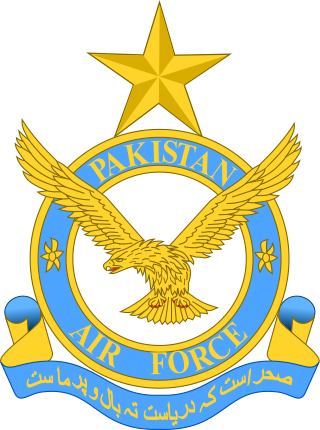
The Pakistan Air Force (PAF) is the aerial warfare branch of the Pakistan Armed Forces, tasked primarily with the aerial defence of Pakistan, with a secondary role of providing air support to the Pakistan Army and Pakistan Navy when required, and a tertiary role of providing strategic airlift capability to Pakistan. As of 2021, as per the International Institute for Strategic Studies, the PAF has more than 70,000 active-duty personnel. PAF stands as the eight largest Air Force in the world. PAF is the largest Air Force of the Muslim world in terms of aircraft fleet. Its primary mandate and mission is "to provide, in synergy with other inter-services, the most efficient, assured and cost effective aerial defence of Pakistan." Since its establishment in 1947, the PAF has been involved in various combat operations, providing aerial support to the operations and relief efforts of the Pakistani military. Under Article 243, the Constitution of Pakistan appoints the President of Pakistan as the civilian Commander-in-Chief of the Pakistan Armed Forces. The Chief of the Air Staff (CAS), by statute a four-star air officer, is appointed by the President with the consultation and confirmation needed from the Prime Minister of Pakistan.

The Indian Air Force (IAF) is the air arm of the Indian Armed Forces. Its primary mission is to secure Indian airspace and to conduct aerial warfare during armed conflicts. It was officially established on 8 October 1932 as an auxiliary air force of the British Empire which honoured India's aviation service during World War II with the prefix Royal. After India gained independence from United Kingdom in 1947, the name Royal Indian Air Force was kept and served in the name of the Dominion of India. With the transition to a republic in 1950, the prefix Royal was removed.
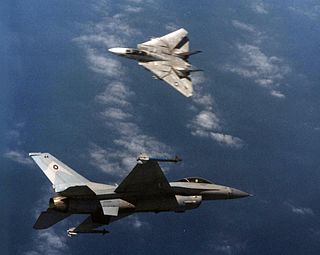
A dogfight, or dog fight, is an aerial battle between fighter aircraft conducted at close range. Modern terminology for air-to-air combat is air combat manoeuvring (ACM), which refers to tactical situations requiring the use of individual basic fighter maneuvers (BFM) to attack or evade one or more opponents. This differs from aerial warfare, which deals with the strategy involved in planning and executing various missions.
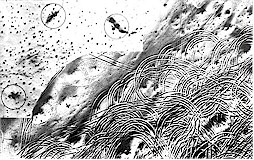
The Battle of Longewala was one of the first major engagements in the western sector during the Indo-Pakistani War of 1971, fought between assaulting Pakistani forces and Indian defenders at the Indian border post of Longewala, in the Thar Desert of Rajasthan. The battle was fought between 120 Indian soldiers accompanied by four Hawker Hunter and three HAL Marut fighter-bombers and 2,000–3,000 Pakistani soldiers accompanied by 30–40 tanks.

Akash is a medium-range mobile surface-to-air missile (SAM) system developed by the Defence Research and Development Organisation (DRDO) and produced by Bharat Dynamics Limited (BDL). Surveillance and Fire control radar, tactical control and command center and missile launcher are developed by Bharat Electronics (BEL), Tata Power Strategic Engineering Division and Larsen & Toubro. The Akash missile system can target aircraft up to 45 km (28 mi) away. It has the capability to neutralise aerial targets like fighter jets, cruise missiles and air-to-surface missiles. It is in operational service with the Indian Army and the Indian Air Force.

Exercise Red Flag is a two-week advanced aerial combat training exercise held several times a year by the United States Air Force. It aims to offer realistic air-combat training for military pilots and other flight crew members from the United States and allied countries.

The Sukhoi Su-30MKI is a two-seater, twinjet multirole air superiority fighter developed by Russian aircraft manufacturer Sukhoi and built under licence by India's Hindustan Aeronautics Limited (HAL) for the Indian Air Force (IAF). A variant of the Sukhoi Su-30, it is a heavy, all-weather, long-range fighter.
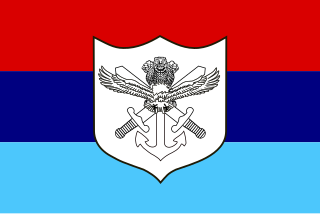
The Indian Armed Forces are the military forces of the Republic of India. It consists of three professional uniformed services: the Indian Army, Indian Navy, and Indian Air Force. Additionally, the Indian Armed Forces are supported by the Central Armed Police Forces, Indian Coast Guard and Special Frontier Force and various inter-service commands and institutions such as the Strategic Forces Command, the Andaman and Nicobar Command and the Integrated Defence Staff. The President of India is the Supreme Commander of the Indian Armed Forces but the executive authority and responsibility for national security is vested in the Prime Minister of India and their chosen Cabinet Ministers. The Indian Armed Forces are under the management of the Ministry of Defence of the Government of India. With strength of over 1.4 million active personnel, it is the world's second-largest military force and has the world's largest volunteer army. It also has the third-largest defence budget in the world. The Global Firepower Index report lists it as the fourth most-powerful military.

Exercise Northern Edge is a military joint training exercise conducted by the United States Armed Forces in the Gulf of Alaska. Alaskan Command (ALCOM) uses expansive Alaskan training ranges to conduct this joint training operation.

Gorakhpur Airport, officially Mahayogi Gorakhnath Airport, is a domestic airport and an Indian Air Force base serving the city of Gorakhpur, in the state of Uttar Pradesh, India. The Airports Authority of India (AAI) operates it as a civil enclave at the Air Force base. The airport is located 8 km (5.0 mi) from the city centre. The airport covers an area of 0.71 acres (0.29 ha). In June 2017, the passenger terminal was inaugurated by the Chief Minister of Uttar Pradesh, Yogi Adityanath.

A highway strip, road runway or road base is a section of a highway, motorway or other form of public road that is specially built to act as a runway for (mostly) military aircraft and to serve as an auxiliary military air base. These runways allow military aircraft to continue operating even if their regular air bases, some of the most vulnerable targets in any war, are degraded or destroyed.

Kalaikunda Air Force Station (ICAO: VEDX) is an Indian Air Force Base in Kharagpur, located in the West Midnapur district of the state of West Bengal. It was the home of No. 18 Squadron IAF, the Flying Bullets. The squadron flew the Indian license-built Mikoyan MiG-27ML till its decommissioning in April 2016. A squadron of Su-30 MKIs is now at the base.
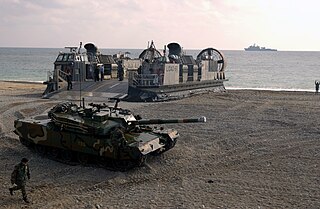
Foal Eagle is a combined field training exercise (FTX) conducted annually by the Republic of Korea Armed Forces and the United States Armed Forces under the auspices of the Combined Forces Command. It is one of the largest military exercises conducted annually in the world. Foal Eagle has been a source of friction with the government of Democratic People's Republic of Korea (DPRK) and domestic ROK critics.
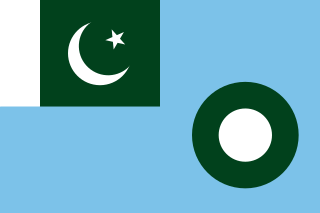
The history of the Pakistan Air Force (PAF) began when it was established in 1947 following the independence of Pakistan.

On 26 July 2010, an Israeli Air Force Sikorsky CH-53 Yas'ur helicopter crashed during a training flight in the Carpathian Mountains, near the city of Brașov in Romania. The accident took place during a joint Romanian-Israeli aviation military exercise code-named "Blue Sky 2010".
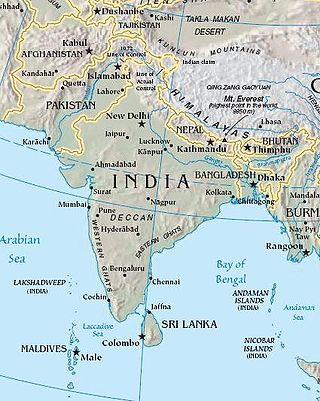
After the 2008 Mumbai attacks, Pakistan and the ISI were believed by India to be directly responsible for the attacks, leading to strained relations between the two countries for a period of time. An Anti-Pakistani sentiment also rose in India, causing many, including the United States to call for probes into it.
Military exercises are conducted by the Pakistan Armed Forces to increase combat readiness, and to identify problems in logistics, training, and current military doctrine. They also test the ability of units to work together. Lastly, they act as a visible expression of military might, which acts as a deterrent to potential enemy action. An important component of each exercise is the after-action assessment. Since 1989 the four branches services have increasingly begun coordinated exercises.

Theatre Level Operational Readiness Exercise (TROPEX) is an inter-service military exercise involving the participation of the Indian Army, Air Force, Navy and the Coast Guard. The exercise generally commences at the beginning of each year and lasts a month. It is generally carried out in three phrases: independent workup phase, joint workup phase and tactical phase.
Tiger Triumph is the bilateral tri-service amphibious military exercise involving the armed forces of India and the United States. It is the first tri-service military exercise between the two countries. India has previously only held tri-service exercises with Russia.


















